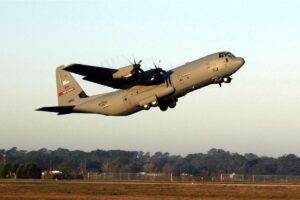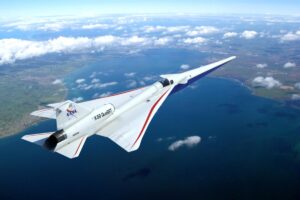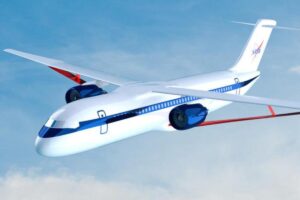Simplify Data Integration with 429 to SYNCHRO Converters
Introduction
In modern avionics and aerospace systems, successful integration of disparate components often hinges on the ability to translate between differing communication protocols. Two of the most widely utilized standards in these domains are ARINC 429 and SYNCHRO. ARINC 429, a digital data transfer standard, is prevalent in commercial aircraft systems, while SYNCHRO, an analog-based signal format, remains vital in various control mechanisms such as servo motors and position indicators. Bridging these technologies is essential when combining new digital systems with existing analog infrastructure. 429 to SYNCHRO converters serve this purpose, enabling seamless interoperability and extending the lifecycle of legacy systems. This white paper provides an in-depth examination of the technology, architecture, application scenarios, design considerations, and future developments surrounding 429 to SYNCHRO protocol converters.
1.1 ARINC 429 Overview
ARINC 429 is a unidirectional, point-to-point data bus standard used extensively in civil aviation. It transmits 32-bit words at data rates of either 12.5 or 100 kbps. The protocol offers high reliability and simplicity, with each data word comprising a label, data field, source/destination identifier (SDI), and parity bit. The deterministic nature of ARINC 429 makes it highly suitable for real-time applications in aircraft systems, including navigation, engine control, and environmental monitoring.
1.2 SYNCHRO Signal Fundamentals
SYNCHRO systems use analog voltage signals to represent angular positions, typically through a three-wire system that outputs a sinusoidal waveform corresponding to shaft rotation. These systems are historically used in military and industrial equipment where mechanical reliability and precision are paramount. SYNCHRO signals are ideal for applications such as cockpit indicators, antenna positioning, and gyroscopic systems.
1.3 The Incompatibility Challenge
While both ARINC 429 and SYNCHRO are foundational to aerospace technology, they operate on fundamentally different principles—digital versus analog. Integrating systems across these formats requires more than basic electrical conversion; it involves precise data interpretation, signal synthesis, and timing coordination to ensure accurate and real-time translation.
2.1 Bridging the Digital-Analog Divide
429 to SYNCHRO converters play a crucial role in mixed-technology environments. They receive digital inputs from ARINC 429 data buses, decode the data into positional values, and generate corresponding analog SYNCHRO signals. This facilitates the integration of modern avionics computers with legacy display and control systems.
2.2 Ensuring Signal Fidelity
Accurate signal translation is paramount in critical systems such as navigation and targeting. Converters must faithfully reproduce SYNCHRO outputs with minimal distortion, phase error, or jitter to maintain system integrity and performance.
2.3 Enhancing System Interoperability
Converters enable interoperability between digital avionics systems and analog-based controls, expanding design flexibility. They allow the use of proven SYNCHRO-based actuators and indicators with digital avionics platforms, preserving valuable infrastructure while enabling modernization.
3.1 Input Interface and Decoding
The converter begins by interfacing with the ARINC 429 bus, typically using a dedicated receiver IC capable of filtering and reading incoming messages. Decoding logic extracts the label and interprets the associated data fields, translating them into angular positions.
3.2 Digital Processing Core
An embedded microcontroller or FPGA handles the conversion logic. It reads the angular value encoded in the 429 message, applies scaling and filtering algorithms, and generates the appropriate waveform parameters for SYNCHRO output.
3.3 SYNCHRO Signal Generation
Using high-speed DACs (Digital-to-Analog Converters) and sine wave generators, the system synthesizes the three-phase analog outputs characteristic of a SYNCHRO system. Outputs are usually transformer-isolated to match impedance and signal quality requirements.
3.4 Power Management and EMI Protection
Converters must operate within aircraft electrical environments, often characterized by wide voltage ranges and high electromagnetic interference. Designs incorporate voltage regulators, shielding, and transient suppression to ensure robustness and compliance with standards.
4.1 Cockpit Instrument Modernization
Aircraft retrofits often involve installing digital avionics into platforms that still rely on analog displays. 429 to SYNCHRO converters enable these upgrades by linking flight computers to legacy instruments, maintaining the cockpit’s functional layout while modernizing its capabilities.
4.2 Radar and Antenna Control Systems
SYNCHRO signals are commonly used to position radar dishes and directional antennas. By feeding digital commands over ARINC 429 into a converter, these systems can be precisely controlled without replacing mechanical actuators.
4.3 Simulators and Training Equipment
Flight simulators must replicate real-world conditions accurately, including analog indicator behavior. Converters allow simulation systems using digital avionics to interface with traditional control panels and analog instruments.
4.4 Naval and Defense Applications
Many defense platforms, including naval vessels and armored vehicles, use SYNCHRO-based controls. Converters ensure compatibility with newer digital control systems, supporting mission readiness without major hardware overhauls.
5.1 Data Resolution and Accuracy
Converters must offer high angular resolution, often better than 0.1 degrees, to ensure precise positioning. Designers must optimize the resolution of digital inputs and DAC outputs accordingly.
5.2 Timing and Update Rates
Real-time systems demand timely updates. ARINC 429 inputs typically refresh every 100–500 milliseconds, and converters must process and update SYNCHRO outputs accordingly without noticeable lag.
5.3 Load Compatibility and Drive Strength
SYNCHRO devices present specific load characteristics. The converter’s analog output stage must be capable of driving typical SYNCHRO loads—often in the range of 7.5 VA—while maintaining phase balance and voltage levels.
5.4 Safety and Redundancy
Safety-critical applications benefit from redundant converters and health monitoring features. Converters may include watchdog timers, output validation, and automatic switchover mechanisms.
5.5 Compliance with Avionics Standards
Products must meet rigorous standards, including DO-160 for environmental conditions, DO-254 for hardware, and DO-178C for any embedded software, ensuring airworthiness and reliability.
6.1 Data Interpretation Ambiguity
Interpreting 429 messages relies on understanding specific label sets and proprietary data formatting. Incorrect interpretation can lead to erroneous analog outputs.
6.2 Noise and Interference
SYNCHRO signals are analog and can be susceptible to EMI and crosstalk. Converters must include filtering and shielding to maintain signal integrity, especially in electrically noisy environments.
6.3 Power Dissipation and Heat Management
Generating SYNCHRO signals at sufficient voltage and power levels can lead to significant heat buildup. Effective thermal design and component selection are vital to maintain performance.
6.4 Lifecycle and Obsolescence
Given the long service life of aerospace systems, converters must be designed for longevity, with clear support plans and upgrade paths to address obsolescence.
7.1 Programmability and Configuration
Modern converters allow users to define which ARINC labels map to specific SYNCHRO outputs, supporting a wide range of systems without hardware changes.
7.2 Built-In Test (BIT) Functions
BIT capabilities monitor system status, detect faults, and provide diagnostic data, supporting maintainability and fault isolation.
7.3 Remote Monitoring and Control
Ethernet or serial interfaces can allow ground operators to update converter settings, monitor signal health, and log performance data for analysis.
7.4 Multiple Channel Outputs
Some converters offer multiple SYNCHRO channels from a single ARINC 429 source, reducing hardware needs and simplifying system integration.
7.5 Cybersecurity Enhancements
For networked environments, converters may include encrypted communication, secure boot, and authenticated firmware to protect against cyber threats.
8.1 Define System Requirements
Start by identifying all signal paths, load requirements, resolution needs, and timing constraints. This ensures proper converter specification and system compatibility.
8.2 Use Shielded Cabling and Isolation
Prevent interference and ground loops by using shielded, twisted-pair cables and galvanically isolated interfaces, especially in high-noise environments.
8.3 Validate Through Simulation and Testing
Simulate signal behavior using software tools or hardware-in-the-loop (HIL) systems to validate converter performance before deployment.
8.4 Documentation and Support Readiness
Ensure the converter provider offers detailed integration manuals, test records, and support channels to streamline deployment and maintenance.
8.5 Lifecycle Planning and Maintenance
Establish a long-term plan for firmware updates, component sourcing, and obsolescence management to avoid future integration challenges.
9.1 AI-Augmented Conversion Systems
Future converters may use AI to optimize waveform synthesis, adapt to load changes, and predict failures through pattern recognition.
9.2 Software-Defined Conversion Architectures
Using reconfigurable platforms like FPGAs, converters may become software-defined, enabling multi-protocol support and adaptive behavior.
9.3 Miniaturization for UAVs and Spacecraft
Ongoing innovation in component density and power efficiency is driving the development of smaller, lighter converters suited for UAVs and small satellites.
9.4 Integrated Systems with Built-In Conversion
Avionics modules may increasingly incorporate internal 429 to SYNCHRO conversion, eliminating standalone devices and streamlining wiring.
9.5 Enhanced Certification Automation
Automated tools are emerging to streamline certification for DO-160, DO-254, and DO-178C compliance, reducing time-to-market for converter products.
429 to SYNCHRO converters are critical components in the modernization and integration of avionics systems. They allow for seamless communication between digital and analog systems, preserving legacy hardware while enabling the benefits of modern data buses. By understanding their operation, challenges, and best practices, system designers can ensure high-performance, reliable integration across platforms. As technology continues to evolve, these converters will grow more intelligent, adaptable, and secure—serving as vital tools in the next generation of aerospace and defense systems.





